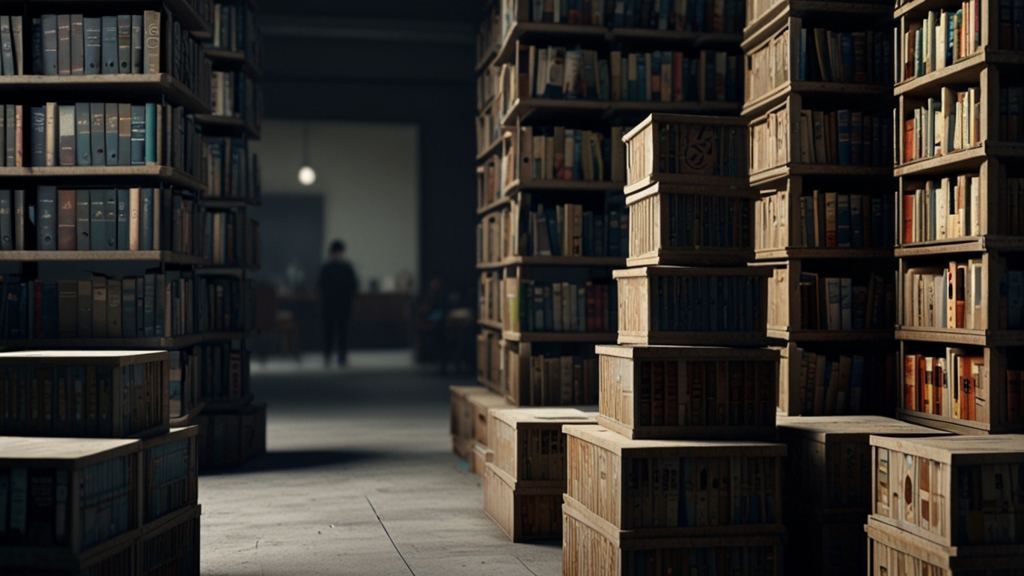Hidden Messages in Van Gogh's Art: What He Tried to Tell Us
Vincent van Gogh, one of the most famous and influential figures in Western art, produced over 2,100 artworks in his short career. His post-impressionist paintings, filled with bold colors and dramatic, impulsive brushwork, have captivated audiences for more than a century. Yet beyond their visual splendor, Van Gogh's works are often imbued with hidden messages and deeper meanings that reflect his personal struggles, philosophical insights, and emotional state. This article explores some of the enigmatic layers embedded in Van Gogh's art, revealing what he might have been trying to tell us.
The Power of Color
Van Gogh's use of color wasn't merely for aesthetic purposes; it was deeply symbolic. He often employed specific colors to evoke certain feelings or to represent particular themes. For instance, in his painting The Starry Night, the swirling blue night sky set against a darker, more still landscape can symbolize the turbulence of the human mind set against the calm of nature. Van Gogh's use of color can be seen as a reflection of his emotional state, a mood diary of sorts, where each hue represents a fragment of his inner world.
"Instead of trying to reproduce exactly what I have before my eyes, I use color more arbitrarily to express myself forcibly." - Vincent van Gogh
Emotional Landscapes
Van Gogh's appreciation for nature and landscapes is well-documented, but these scenes often carried deeper emotional meanings. His painting Wheatfield with Crows, completed just weeks before his death, is a somber, foreboding scene marked by a dark sky and crows taking flight. The stark contrast in the colors and the chaotic brushstrokes suggest a sense of turmoil and possibly foreshadow his tragic end. These emotional landscapes can be viewed as manifestations of Van Gogh's state of mind, eloquently expressing feelings he may have struggled to put into words.
The Significance of Objects
In addition to landscapes, everyday objects in Van Gogh's paintings often carry hidden connotations. His series of sunflower paintings, for example, has been interpreted in numerous ways. Some scholars suggest that the sunflowers represent happiness and high spirits, while others believe they symbolize the cycle of life and death. Van Gogh himself wrote that he hoped the paintings would demonstrate what he could achieve with color, suggesting that the sunflowers were also a testament to his artistic skills and aspirations.
"The sunflower is mine, in a way." - Vincent van Gogh
Personal Struggles Depicted
Van Gogh's tumultuous personal life, marked by mental illness, poverty, and strained relationships, is often mirrored in his art. For instance, Self-Portrait with Bandaged Ear is a haunting representation of his inner turmoil and mental instability. This painting, created after he famously cut off a portion of his ear, is raw and vulnerable. Through the self-portrait, Van Gogh communicates his fragility and suffering, perhaps seeking empathy and understanding from those who view his work.
The Concept of Time
Van Gogh’s fascination with time and its passage is another recurring theme. Many of his paintings feature clocks, candles, or seasons that signify the transitory nature of existence. In Café Terrace at Night, Van Gogh captures a fleeting moment of evening tranquility, while in The Night Café, the distorted perspective and glowing colors convey a sense of disorientation and timelessness. These elements can be viewed as Van Gogh’s reflections on the impermanence of life and the inevitability of change.
An Invitation to Look Deeper
Van Gogh’s art invites viewers to look beyond the surface and delve into the deeper layers of meaning. His paintings are not just visual representations but also emotional and philosophical statements. By understanding the hidden messages in his work, we can gain deeper insight into Van Gogh’s mind and the human experience as a whole. Whether it’s through the use of color, the depiction of landscapes, or the symbolism of everyday objects, Van Gogh’s art speaks to us in a multitude of ways, each layer revealing a new facet of his genius.
"I want to touch people with my art. I want them to say 'he feels deeply, he feels tenderly.'" - Vincent van Gogh
In essence, the hidden messages in Van Gogh's art are a testament to his profound sensitivity and his desire to communicate complex emotions and ideas. They are a reminder that art can be a powerful medium for expressing the inexpressible, and that sometimes, the most important messages are those that are not immediately visible, but rather felt and discovered over time.







